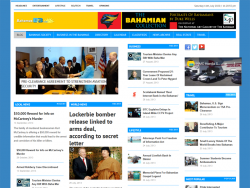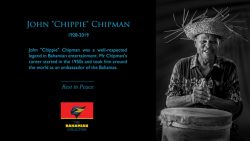Machine-readable passports are expected to be introduced in the country in about one year, according to Minister of Foreign Affairs Fred Mitchell.
Minister Mitchell said Wednesday that he does not expect any problems to arise during the transition to the new passports.
“It is not really such a dramatic change,” he said. “My only concern is [that] the matter is just taking too long. I have said this publicly many times. It is really quite a shame.”
The Minister said as a result of the long delays in introducing the new passports, the standards relating to what information would be included in the travel document have changed from what they originally were.
He highlighted some of the information that is now expected to be featured in machine-readable passports.
“Biometrics are now supposed to be in the passport,” he said. “This means that some identifying mark like a fingerprint, facial recognition or eye scan [will be included]. So the bids have had to go back out again and the latest information is that the response to the bids should be in somewhere in the first week in August, probably about the eight or so of August,” Minister Mitchell said.
“Then the procedure will go from there with regards to choosing a vendor and then the work being awarded. So that is were we are. We are hoping to get it all done by [the middle of] next year.”
A machine-readable passport has certain biographical data entered on the data page in accordance with standards set by the International Civil Aviation Organization (ICAO).
These standards address issues like the size of the passport and photograph, arrangement of data fields, and the two lines of printed machine-readable data that appear at the bottom of the page and can be read by scanning the two lines of printed data through special readers.
Minister Mitchell explained how the new passports would be phased in.
“If the International Civil Aviation Organization (ICAO) makes a decision, for example, that by the first of October 2006 these standards are supposed to be in place then that means all passports that are issued after that date would have to have these measures in and those issued before would not apply,” Minister Mitchell said.
“But the experience in other countries is that most people just go and change them anyway.”
The U.S Department of State has said the passports are expected to help deter fraud and quickly confirm a passport holder’s identity.
The United States Department of Homeland Security (DHS) announced on June 15, 2005 that Visa Waiver Program countries (VWP) would have to satisfy biometric requirements by presenting passports with digitized photographs and eventually integrated chips.ᅠ
Abdelnour Zaiback, consul chief at the U.S. Embassy, explained that U.S. passports are already machine-readable.
“U.S passports have a number of security features,” Mr. Zaiback said. “One of them is the machine-readable component. There is a code of messages at the bottom of the passports, which helps secure the document.
“So by swiping the passport into a special reader, if it is not coded right it would not bring up the correct message about the traveler and this would immediately trigger the official at the port of entry. So right then they would recognize that it is a false document that was fraudulently produced.”
Mr. Zaiback explained the importance of other security measures soon to be implemented for U.S. passports, including a digitized photograph.
He said U.S. officials also soon plan to include an electronic chip that can store information, including fingerprints.
“So if the officer is suspecting that the traveler is not the same as the one the document was issued to he could ask for the fingerprint and instantaneously he could verify whether this is the person to whom the document was issued to,” Mr. Zaiback said.
By: Royanne Forbes, The Bahama Journal



